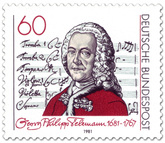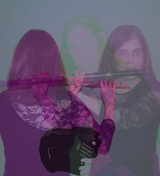Recently, I’ve been working on Telemann’s Concerto in E minor for Two Flutes with Basso Continuo TWV 53: e2, Burn’s Highland Mary, a set of contemporary strathspeys ending with a jig, a set of polkas and Handel’s Flute Sonata in F for my recital (more of that in another blog).
We’ve just come to the end of the third performance block, and what a joy it’s been making music together, although music is such a conundrum. After rehearsing the Telemann, in which I played Concertante (solo) flute 2, I come away all serene and think to myself that I can play the flute. After a wind band rehearsal of Copland’s Salon Mexico, where the first flute part is at the absolute top of the range and I can hardly play it (too much shrieking!), I come away wondering whether I will ever be able to play the flute. It’s a balance - playing baroque music is intangibly joyful while mastering something like the Copland will be an achievement. I know that if all the music I played was easy, it wouldn’t be an enduring pleasure and it wouldn’t keep my attention for a lifetime.
We’ve just come to the end of the third performance block, and what a joy it’s been making music together, although music is such a conundrum. After rehearsing the Telemann, in which I played Concertante (solo) flute 2, I come away all serene and think to myself that I can play the flute. After a wind band rehearsal of Copland’s Salon Mexico, where the first flute part is at the absolute top of the range and I can hardly play it (too much shrieking!), I come away wondering whether I will ever be able to play the flute. It’s a balance - playing baroque music is intangibly joyful while mastering something like the Copland will be an achievement. I know that if all the music I played was easy, it wouldn’t be an enduring pleasure and it wouldn’t keep my attention for a lifetime.

It’s not surprising that Telemann was so prolific. Born in 1681, he lived until he was 86, dying in 1767. The Oxford Music dictionary observes that “He remained at the forefront of musical innovation throughout his career, and was an important link between the late Baroque and early Classical styles. He also contributed significantly to Germany’s concert life and the fields of music publishing, music education and theory.” He composed over 1000 works, of which at least 125 were concertos. Many of these were “tafelmusik”, smaller scale pieces designed for domestic music-making. I would have like to know more about when and why Telemann composed this work. I have been unable to find information specific to the concerto we played, but it appears to have been composed around 1720 - 30. Have a listen - (I've removed the clapping between movements, and normalised the recording in audacity).
Concerto Grosso in E minor for Two Flutes and Bassoon - Stevenson College String Group:
Concerto Grosso in E minor for Two Flutes and Bassoon - Stevenson College String Group:
In a completely different genre, some utterly simple tunes like Highland Mary are so beautiful in themselves that they transcend everything else. Our arrangement, which weaves instrumental interludes around the solo voice, never failed to create a shiver down my spine - so lovely.
Highland Mary - Stevenson College Trad Band:
Highland Mary - Stevenson College Trad Band:
While I’m looking forward to enjoying the Easter holidays, I have already started having nightmares about my recital and there’s so much work to be done for theory! Onward... and onward.

 RSS Feed
RSS Feed